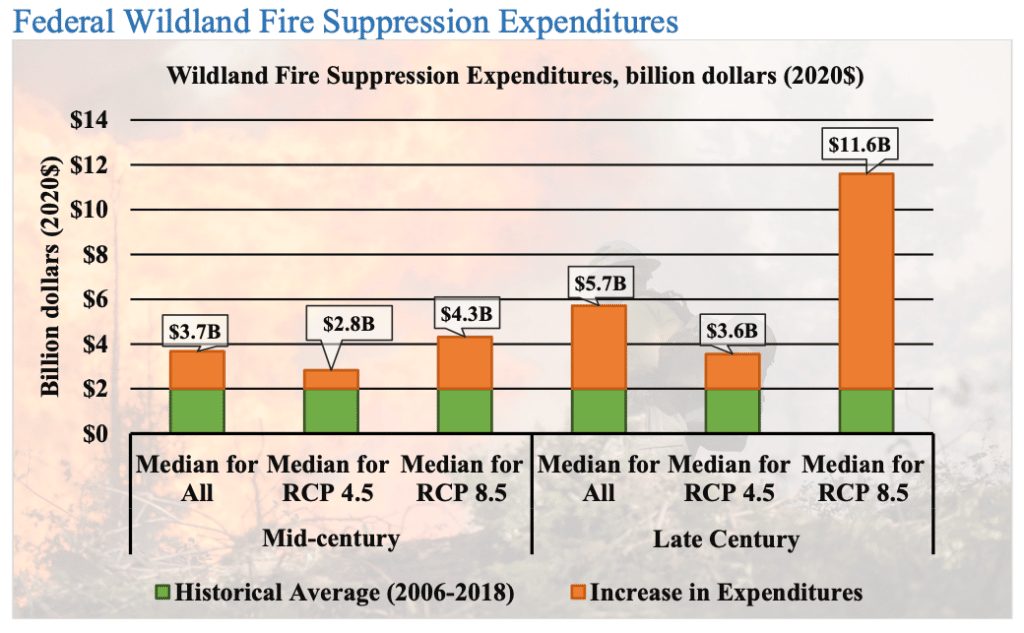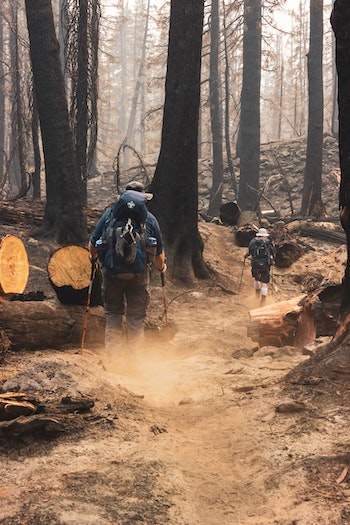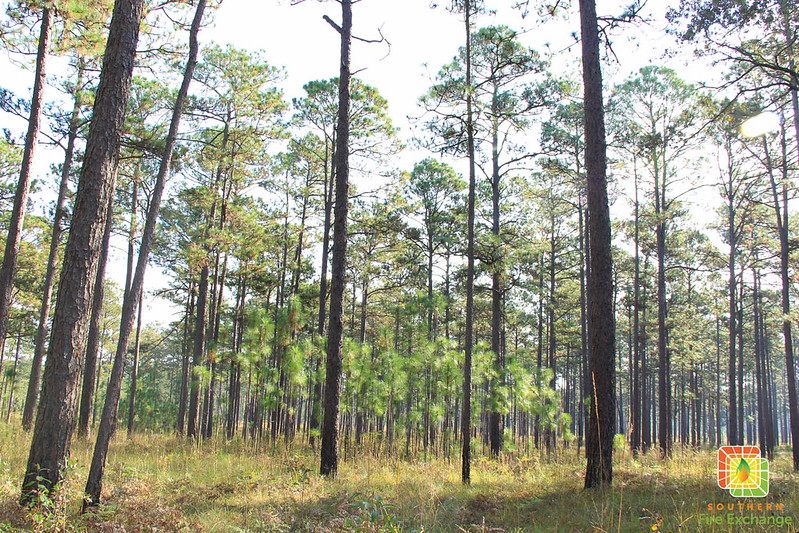A recent research report Climate Risk Exposure: An Assessment of the Federal Government’s Financial Risks to Climate Change (pdf) coproduced by researchers from the USDA Forest Service Southern Research Station describes the potential impacts of climate change on US wildfires, smoke, and human health.
Wildfires are projected to burn three times as much area on federal lands by the end of the century, as compared to previous decades. Furthermore, across all climate scenarios, median federal spending for wildfire suppression is projected nearly triple, translating into a $3.70 billion increase compared to historic spending over the same time frame.
-USDA Forest Service Southern Research Station
The report explains how climate change will increase the cost of wildfire suppression, the human health impacts of wildfire smoke, and the area burned by wildfires. The projected increases depend on the climate change scenario used in the model. For more information see this summary by the USDA Forest Service Southern Research Station or read the full report (pdf).








